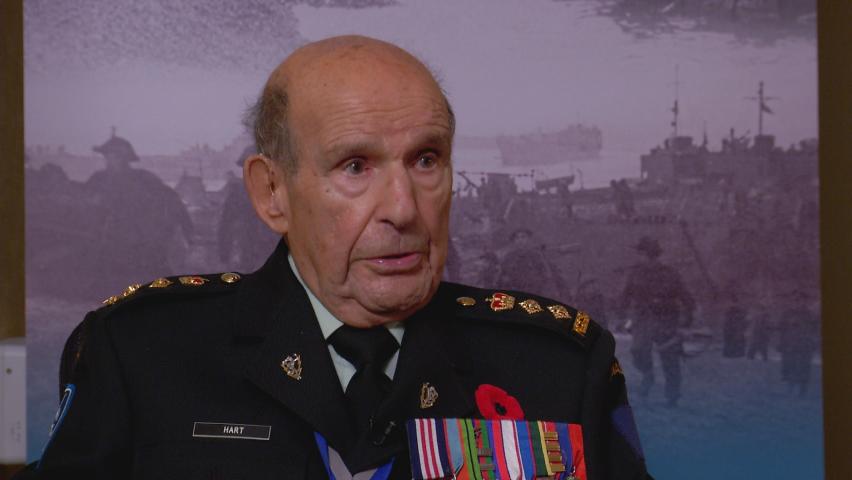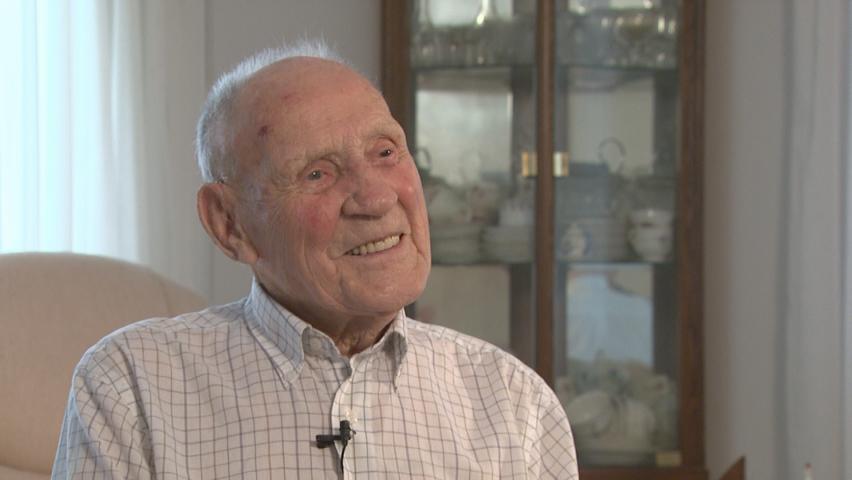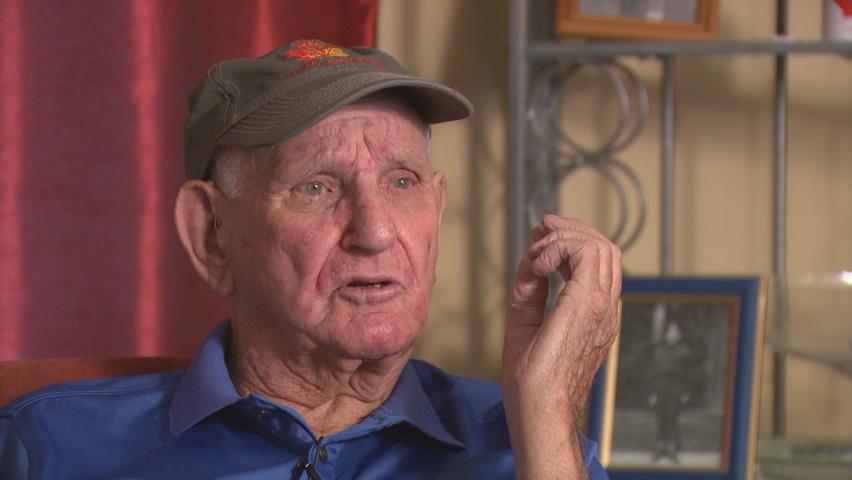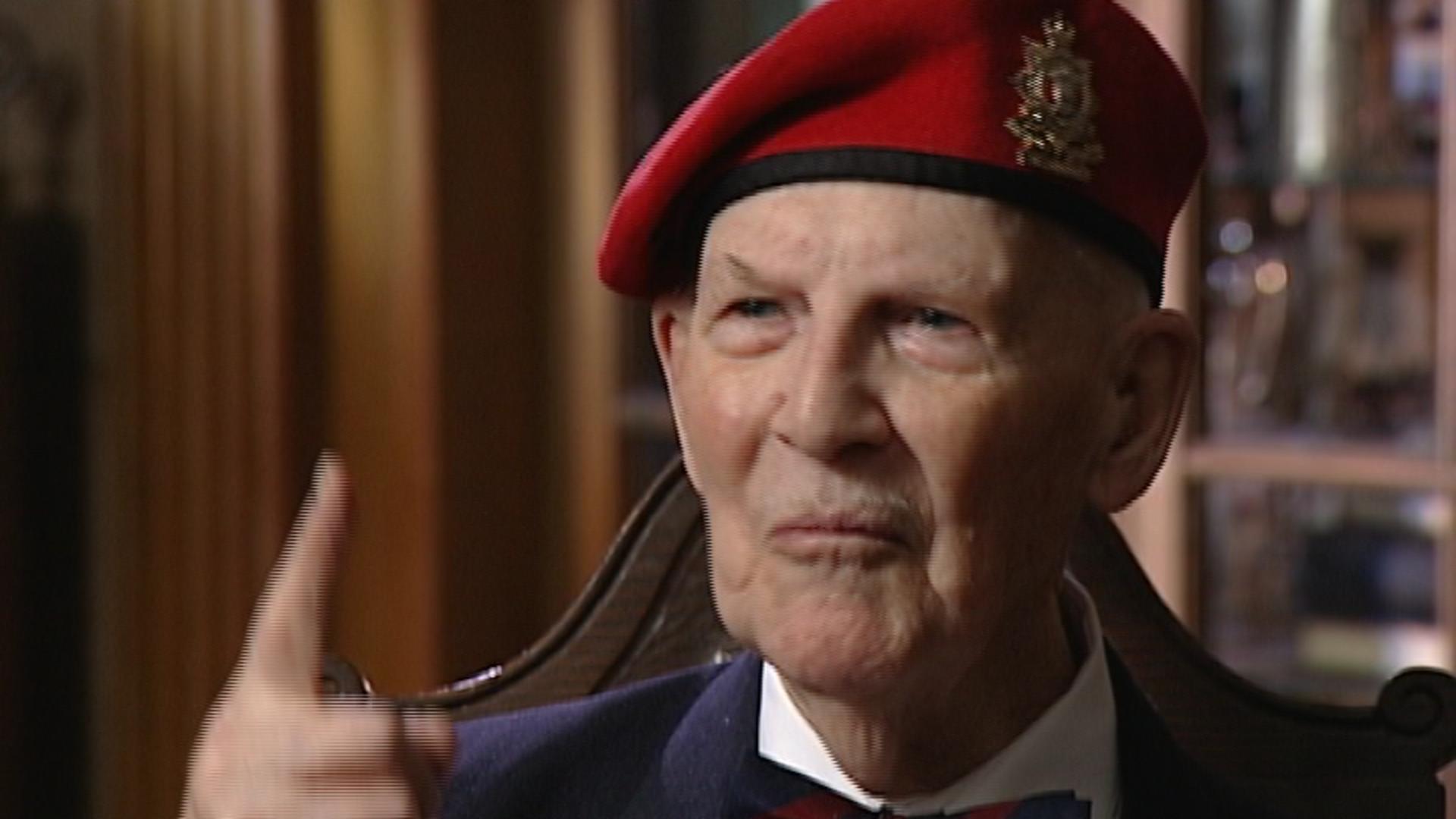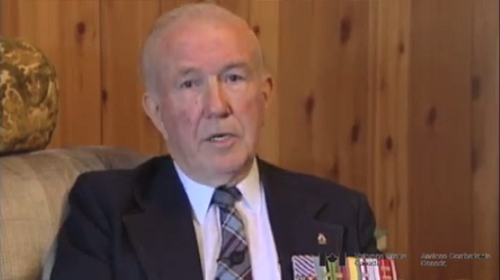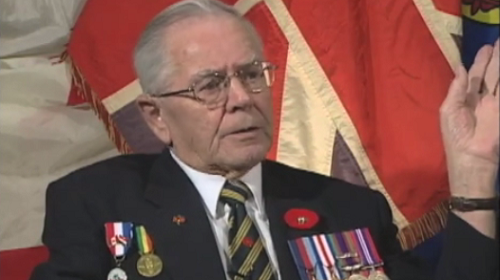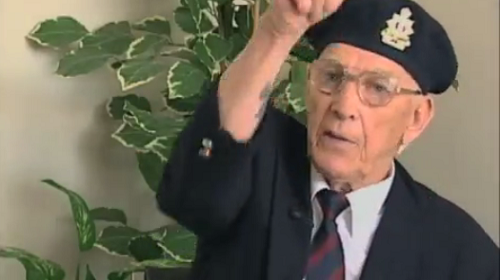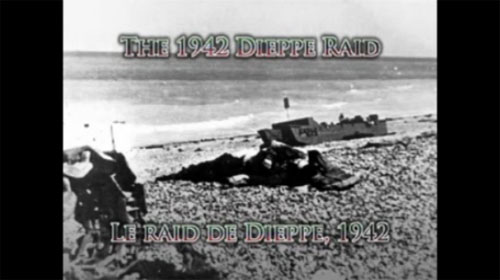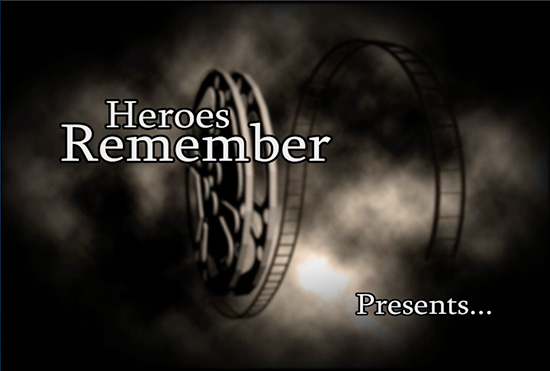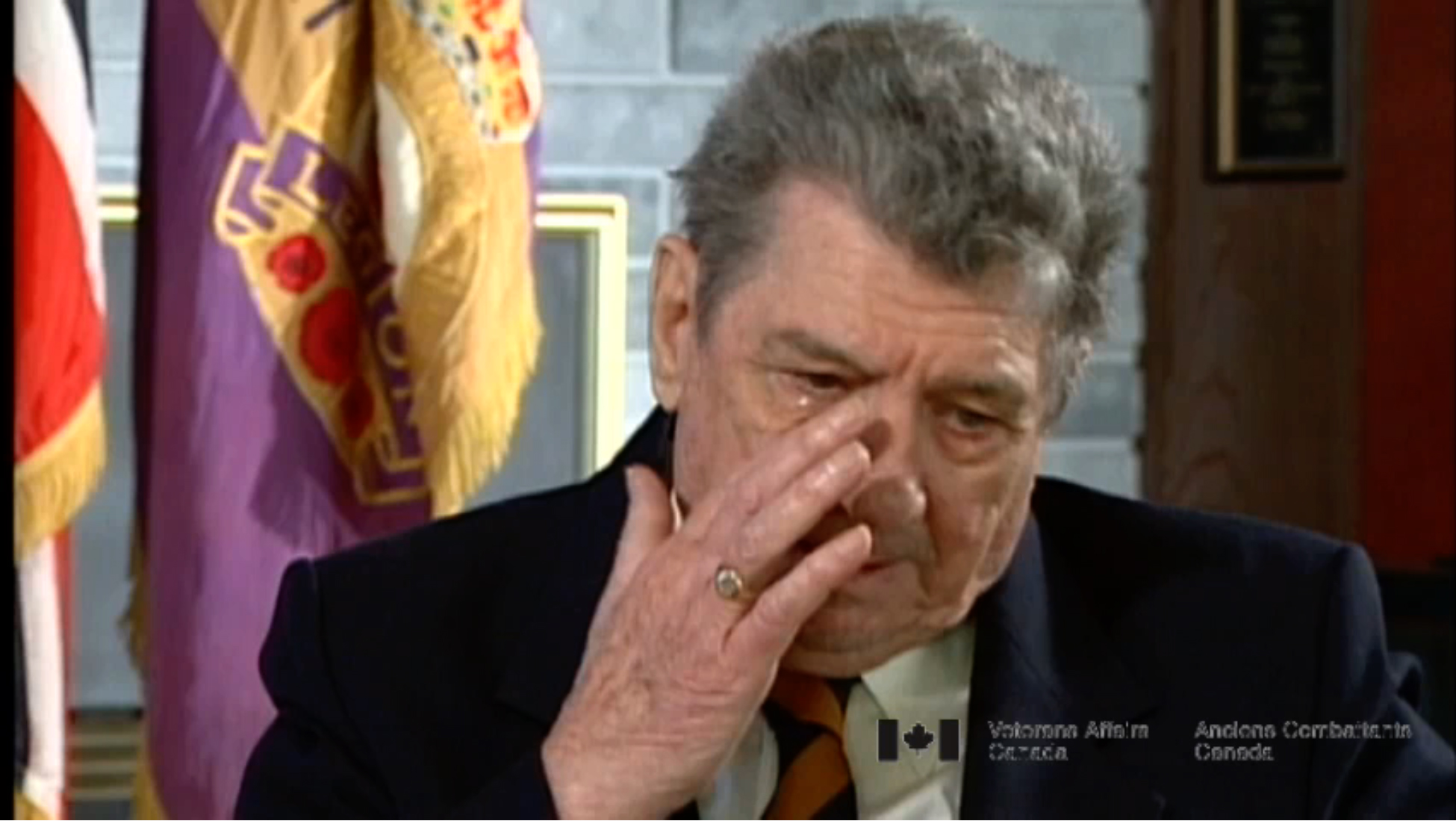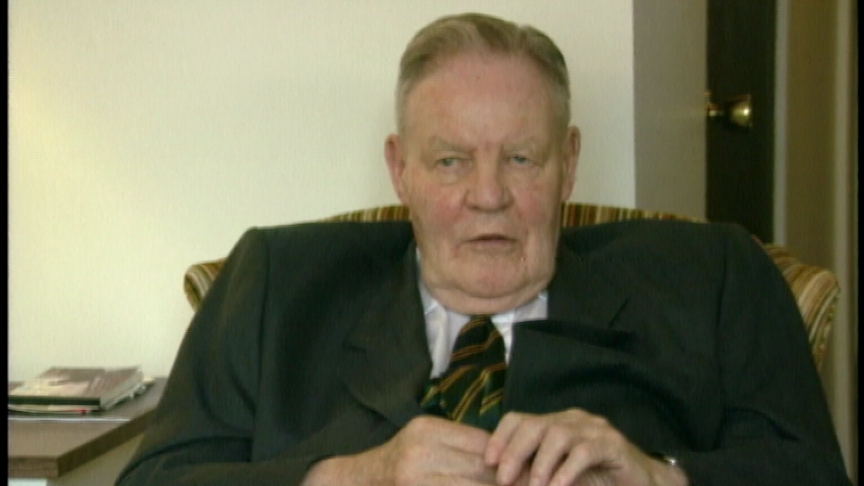Research on Second World War fallen Arthur Malcom Jones
Classroom materials
Research on Second World War fallen Arthur Malcom Jones
Photo of a Canadian soldier in the middle of a cheering crowd.
This campaign was one of the last that happened during the war. It started in the fall of 1944 and ended in May of 1945.Lieutenant-Colonel G.F. Eadie inspecting "C" Company, 1st Canadian Parachute Battalion, Kolkhagen, Germany, 24 April 1945.
Roughly 175,000 Canadians were involved in the Liberation of the Netherlands. Unfortunately, more than 7,600 sacrificed their life.Military ambulance jeep, with 3 soldiers lifting a wounded soldier on a stretcher.
Among them was Pilot Officer Arthur Malcom Jones,Photo of Pilot Officer Arthur Malcom Jones.
who died February 2nd, 1945, at the age of 30, only a few months before Victory in Europe Day. Arthur Jones was originally from Charlottetown in Prince Edward Island. He was born on November 14th, 1915Jones' attestation papers with the RCAF.
to James Malcom Jones and Margaret May Smith. Before enlisting, Jones already had a bit of military experience. For 5 years, from 1928 to 1933, he was part of the Royal Canadian Corps of Signals in the Non-Permanent Active Militia, which can be compared to the Reserve Force today. Jones enlisted in the Royal Canadian Air Force, or the RCAF, on May 27th, 1942 at the age of 27. The Royal Canadian Air Force, just like all other branches in the Canadian military, played a very important part during the war. The air force was responsible for clearing the skiesAerial photo of a bomber with explosions on the ground, down below.
and also engaged in dangerous bombing missions. The contributions of aviation during the Liberation of the Netherlands is sometimes less known, however their work that was doneClose-up on a bomber turret wit broken glass, and an aviator smiling for the camera.
in the skies was a key element which led to victory. Arthur Jones was part of the No. 432 Squadron of the RCAF. The squadron flew with Bomber Command. Jones and his team knew that they were exposing themselvesGroup photo of the crew of Squadron 432, in front of a bomber plane.
to a higher risk than most soldiers. The danger was that almost half of the men never completed their 30 combat missions. The squadron especially took part in night bombings, where they left from the Royal Air Force base East Moor, in England. When the squadron took part in different missions, they would often be flying between 6 to 7 hours at a time. In February 1945, the month that Arthur Jones died, it was the month where the big pushHighly-ranked Canadian military cutting the ribbon at the opening of a bridge, in front a crowd of soldiers.
to liberate Western Europe began. The goal of this large offensive was to free the Netherlands and all of Northwestern Europe from the German occupation. During this period, the role of the Royal Canadian Air Force and that of the No. 432 Squadron was to target German factories and railway tracks with the objective of weakening their army as well as reducing their resources. These efforts from the air force contributed greatly toBomber plane from 432 Squadron and five crew members.
the Allied victory of the Second World War. February 2nd, 1945, 14 airplanes of the No. 432 Squadron of the RCAF were supposed to bomb the German town of Wanne Eickel in the industrial valley of the Ruhr. Arthur Jones was part of this mission as a wireless operator air gunner. It was only his second bombing mission over occupied enemy territory.Identification card of Arthur Jones with the RCAF.
Thirteen airplanes were able to take off, including the aircraft piloted by G. H. Thomson, the one that Jones was in, and they successfully attacked the target. The entire mission was done in total darkness, which could have made their objectives even more difficult to accomplish. On the morning of February 3rd, 1945, once the aircrafts were back at the East Moor base, Pilot Officer Malcom Jones and the rest of his crew were missing. Their bomber had never made it back from their mission the night before. All were hoping that the aviators had become prisoners of war. But the weeks and months passed by without any news from them. By the end of the summer, because no news had been received from the crew, they were declared as most likely deceased.Official document announcing Jones' death.
Jones probably died during the aerial operations on the night of February 2-3, 1945. His body and the bodies of his crewmembers were found after the war. Arthur Jones was not the only member of his crew that never returned to their base at East Moor in February 1945. Six other airmen also died. George Homer Thomson, from Brookdale, Manitoba.Photo of George Homer Thomson.
William Henry Haryett, from Bancroft, Ontario.Photo of William Henry Haryett.
John Thomas Robinson, from Arnprior, Ontario.Photo of John Thomas Robinson.
Robert George Earl Silver, from Winnipeg, Manitoba.Photo of Robert George Earl Silver.
Harry Bloch, from Toronto, Ontario,Photo of Harry Bloch.
and Roy Ronald Vallier, from Kingston, Ontario.Photo of Roy Ronald Vallier.
All seven of them are buried, side by side, in the Reichswald Forest War Cemetery in Germany. Arthur Jones rests in section 8, row D, plot 9.Photo of Arthur Malcolm Jones' headstone.
Even 75 years since the Liberation of the Netherlands, Arthur Malcom Jones’ story, as well as hundreds of others, continue to be shared. It’s important that Canadians can commemorate the sacrifices of those who survived but also of those who were never able to make it back to Canada. That’s one of the reasons why the Parliament of Canada in OttawaPhoto of Parliament Buildings in Ottawa.
dedicated a room to all those who died while serving for Canada.Photo of the Memorial Chamber in the Peace Tower in Ottawa.
The Memorial Chamber commemorates over 118,000 fallen men and women. Arthur Malcom Jones’ name can be found on page 529 of the Second World War Book of Remembrance. Because of the rehabilitation currently happening in Centre Block, where the Memorial Chamber is, the Books of Remembrance have been moved to a temporary location for the next decade.The Books of Remembrance in the Room of Remembrance, in the West Block.
They are now in the Room of Remembrance, in the Parliament of Canada’s West Block. I was lucky to be one of the Parliamentary Tour GuidesImage of the Parliamentary Tour Guide during the opening ceremony of the Room of Remembrance.
who was part of the opening ceremony of the Room of Remembrance. If ever you are in the Ottawa area, visitors are always welcome to the Room of Remembrance. We will remember them.Related Videos
- Date modified:



